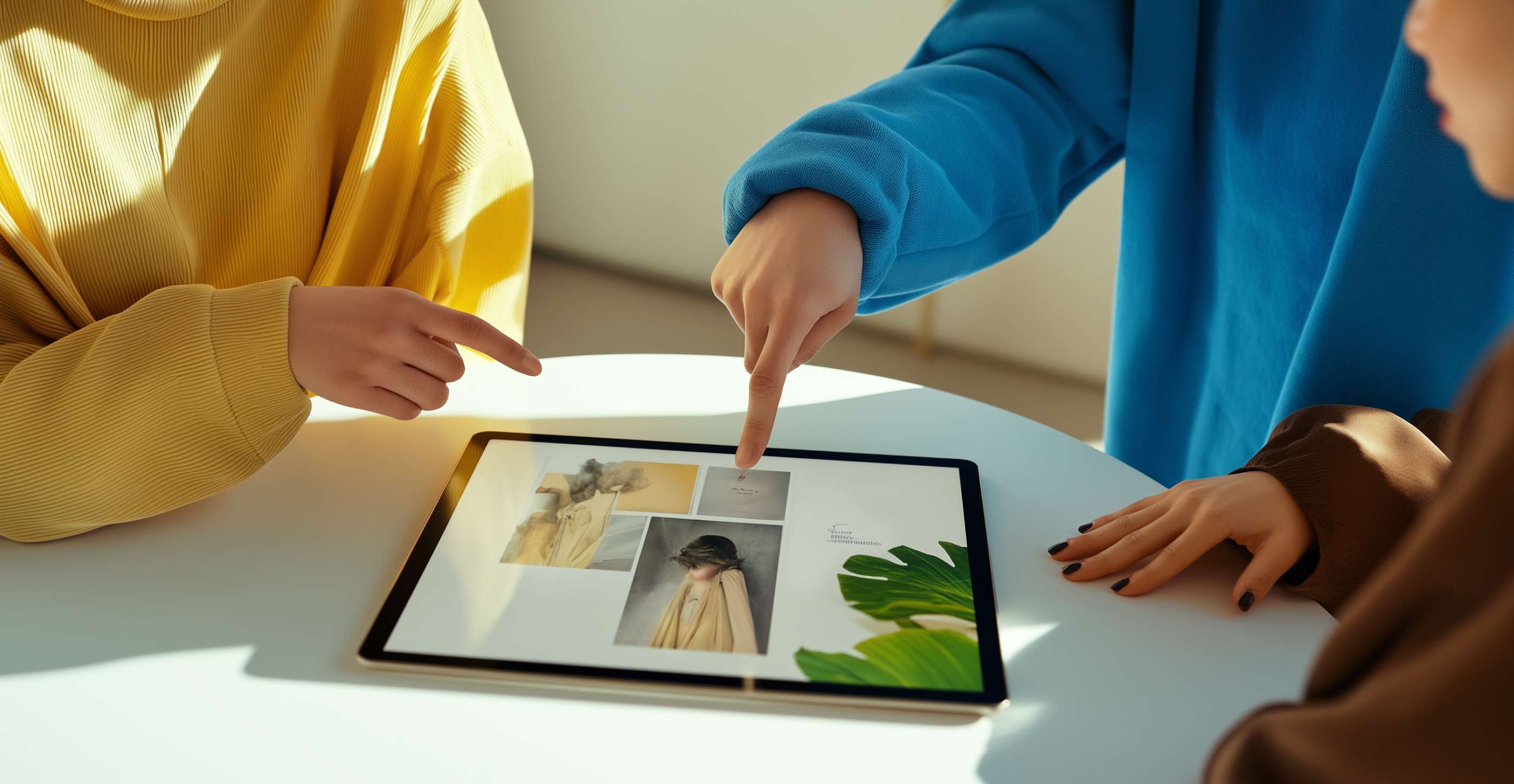7 Ways Lloyds Built a Design System Teams Actually Want to Use
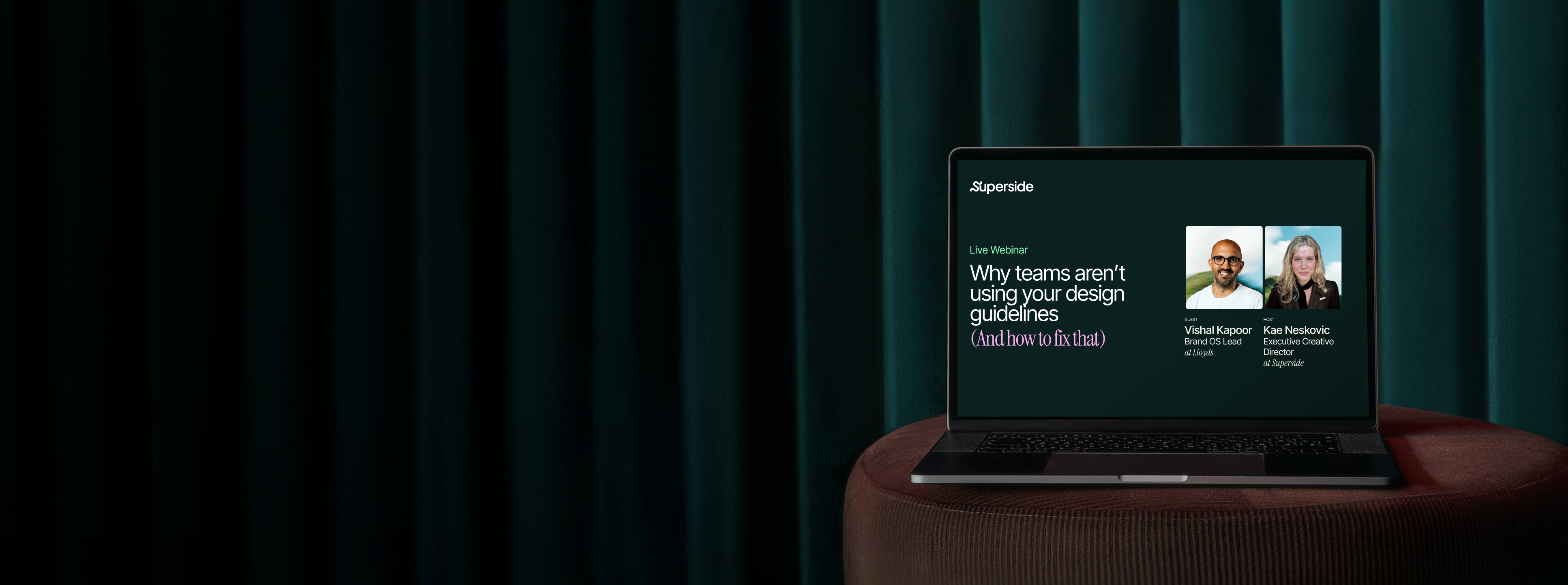
In our latest Superside webinar, Why Teams Aren’t Using Your Design Guidelines (and How to Fix That), Vishal Kapoor, Brand OS Lead at Lloyds, shared how his team turned ignored PDFs into Cancara OS, a fully functioning design operating system that powers six brands across multiple platforms.
Lloyds had six brands, six sets of guidelines, and zero consistency. But in just eight weeks, they built a design OS that teams actually want to use.
Watch the full webinar:
Why Teams Aren’t Using Your Design Guidelines (And How to Fix That)
Meet Vishal Kapoor: Brand Design Lead at Lloyds
Vishal Kapoor leads brand design operations at one of the UK's largest financial institutions, where maintaining brand distinctiveness across six different brands isn't just a creative challenge; it's a business imperative. When Lloyds underwent a major rebrand, the complexity became impossible to ignore.
The rebrand exposed every crack in their design infrastructure: inconsistent visual language across platforms, siloed teams working in parallel without alignment, and quality standards that varied wildly depending on which squad touched which touchpoint.
But instead of doubling down on more comprehensive guidelines, Vishal and his team took a different approach entirely. They built Cancara OS, not just a brand design system, but a distinct brand design operating system that functions as the central engine powering brand coherence at scale.
Here's what they learned about making brand design systems that teams actually use.
1. Treat design systems like products, not documentation
Key takeaway:Don’t just document your design system. Build it like a product, with users, roadmaps, and support baked in.
Every brand design team knows the pain. You spend months building the perfect guidelines, beautiful PDFs, and complete Figma libraries, and product and design teams still go rogue.
Vishal’s view is simple:
“Guidelines alone don’t change behavior. Documentation doesn’t drive consistency. And mandates definitely don’t build trust.”
So instead of issuing more rules, the Lloyds team rebuilt the system from the ground up, this time as infrastructure that designers, engineers, and marketers could actually use.
2. Start with people, not pixels
Key takeaway: System adoption is a people challenge before it’s a design one. Build systems with teams, not for them.
Before diving into components or tokens, Vishal started with culture.
“I’m also a yoga teacher,” he said. “There’s a lot I take from that into how I lead design: presence, patience, empathy.”
That philosophy shaped how Lloyds rebuilt its foundation. The new Brand OS wasn’t just about consistency; it was about collaboration. Product, brand, and marketing teams came together, literally in the same room, to design, systemize, and test in real time.
3. Start fresh, even when it hurts
Key takeaway: Consistency doesn’t come from shortcuts. Sometimes you have to stop, reset, and rebuild to move forward.
When the Lloyds rebrand hit, they had two options: One, push updates out to every team and hope for the best; two, centralize the work, rebuild everything, and hand back a single, aligned baseline.They chose option two.
“It was painful,” Vishal admits. “Some files didn’t exist anymore, so we had to screenshot old flows and rebuild from scratch. But it gave us one source of truth.”
The result? A clean, modern system that powered every digital experience across six brands, and actually worked.
4. Design language ≠ design system
Key takeaway: Separate definition from systemization; it’s the only way to scale creative freedom without chaos.
Most teams blur the lines between defining a distinct brand and scaling it. Lloyds split the two.
“Our design language team defines the visual decisions, the brand’s aesthetic. The systems team systemizes those decisions into components.”
That separation keeps creativity high and execution clean. Designers still explore. Systems still scale. Both move in sync.
5. Scale consistency with design tokens
Key takeaway: Design tokens aren’t technical fluff; they’re how distinctive brand assets stay consistent across platforms.
To manage six brands, Lloyds turned to design tokens, the connective tissue between design and code.
“If you want to change a value, you do it once, and it updates everywhere,” said Vishal.
This approach lets the team roll out color changes, contrast modes, or even entire typefaces across products in days, not months. This is the secret to building distinctive brand assets.
6. Build adoption through community, not compliance
Key takeaway: Don’t be the brand police. Be the creative partner. Support > enforcement.
When Cancara OS launched, the team expected instant love. It didn’t happen.
So they shifted tactics:
- Weekly design clinics for open feedback
- On-demand 1:1 support for product teams
- Creative community-building with playlists, yoga, and casual sessions
“You’re not just the team sending library updates. You’re part of their day. That’s how you build trust.”
7. Build for what’s next: AI-ready design systems
Key takeaway: Future-proof your brand system now. AI will be a consumer of your system, not your replacement for one.
Thinking about the future of brand systems, Superside’s Kae Neskovic asked:
“Is the future of distinct branding less about rebrands and more about living systems that evolve daily with AI?”
Vishal’s take:
“When your foundations are solid, you’re preparing your design system for AI. If you want to take a brand away, add one, or change its color—it’s no problem. That’s the dream: release once, deploy everywhere.”
Build a design system people actually use
The Lloyds story shows what happens when you stop treating design systems as documentation and start treating them like infrastructure.
Sometimes you’ve just gotta start over, even if it sucks. Clear up the messy language, turn things into systems, and probably tokenize more than you want to. But the real game-changer? Stop chasing compliance. Start building community.
That’s how you turn guidelines into a living, breathing brand OS that drives consistency, creativity, and distinctiveness at scale.
Watch the full webinar: Why Teams Aren’t Using Your Design Guidelines (And How to Fix That)
Want more insights like this?
Subscribe to Creative Brief — Superside’s newsletter for creative leaders navigating brand design, systems thinking, and building distinctive brands that scale.
Related reading
Built to be an extension of in-house teams, we deliver fast, scalable, world-class design and creative solutions to over 450 globally renowned companies such as Amazon, Meta, Notion and Google. Connect with us on LinkedIn.
You may also like these
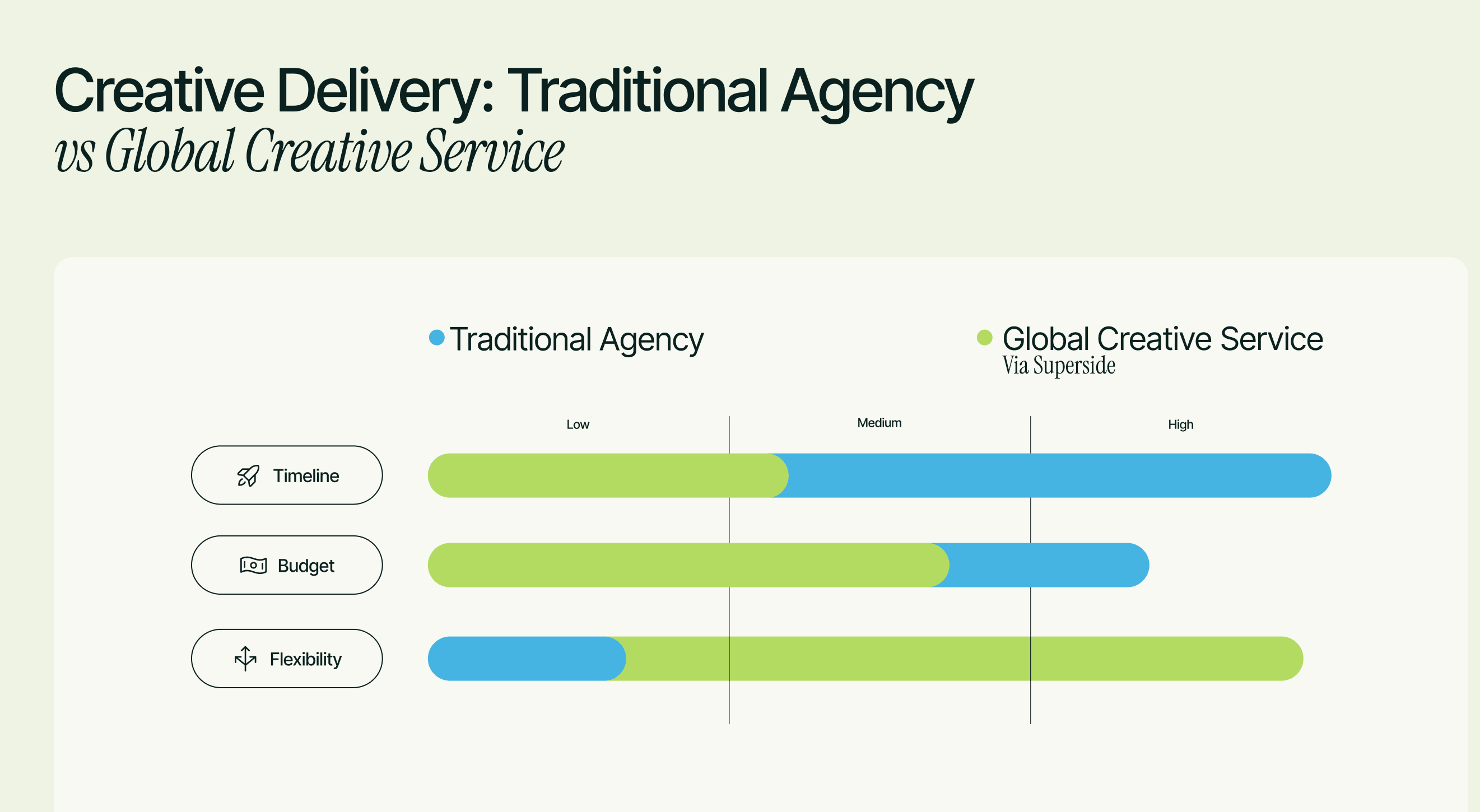
10 creative services examples from top brands in 2025
Creative service companies help brands conceptualize, design, produce and deliver visual and marketing assets that drive awareness, engagement and growth. Increasingly, these service providers also step in to help in-house teams at enterprise-level organizations meet the demands of their always-on, omni-channel marketing cycles.The reality is that the constant push to make new campaigns live puts teams under immense pressure. As a result, outsourced creative work has become a lifesaver for brands that want to keep up with the speed and scale the market now demands.Superside, for example, offers subscription-based access to a world-class team of creatives to help our customers deliver design, video, motion and more. We also stretch into more technical tasks, such as performance marketing, to close the loop on campaigns.At the enterprise level, companies like Superside become the operational engine that keeps quality high and assets consistent, while campaigns effortlessly scale across channels and markets.Why creative services are essential for enterprise growth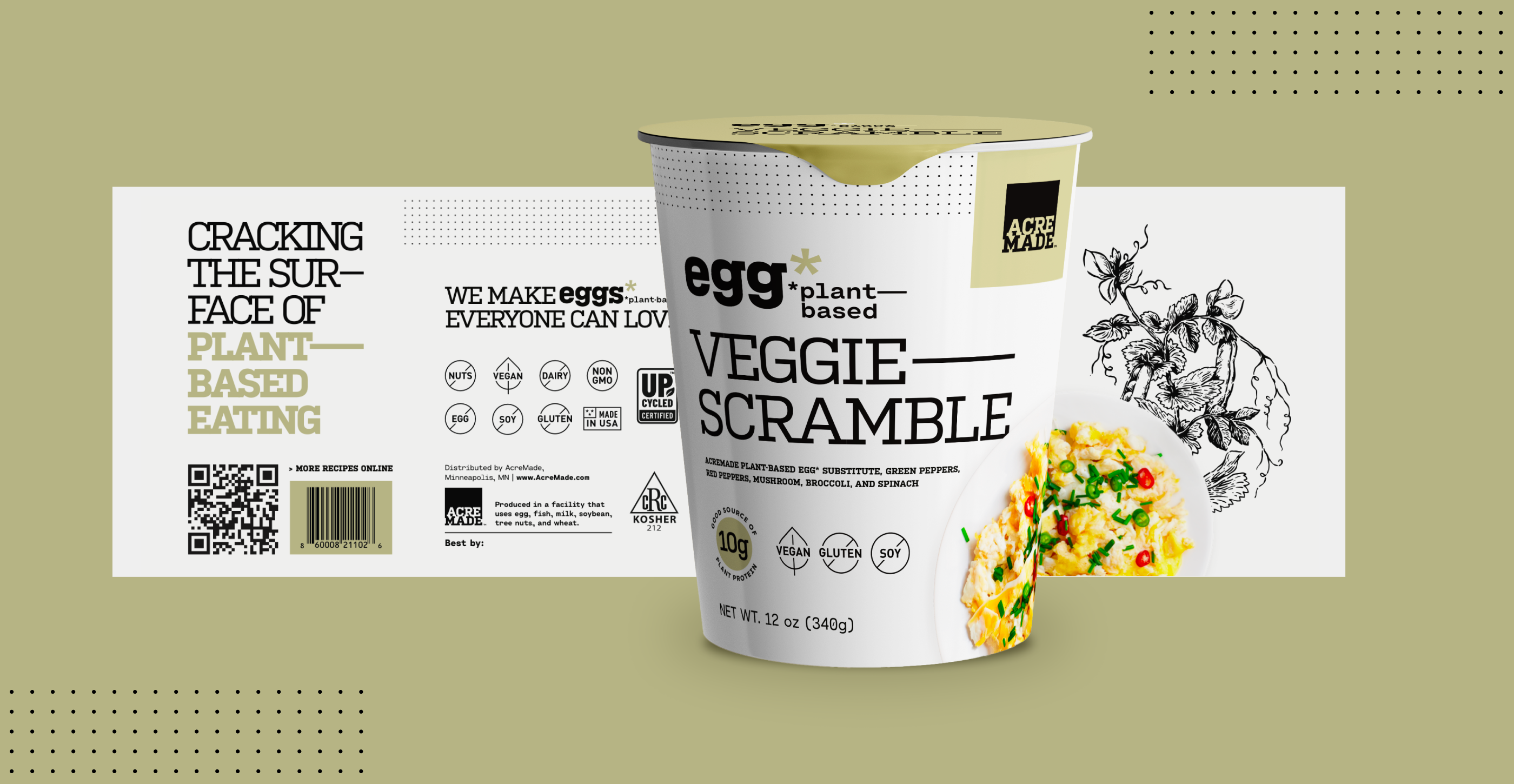
19 best packaging design examples to fuel your marketing in 2025
While it’s true that you can’t judge a book by its cover, the opposite holds true in the world of product packaging.Here, it’s all about the presentation. In fact, 72% of U.S. consumers report that packaging design influences their purchasing decisions, and 67% place value on the materials used.Also, with the global packaging market projected to expand from $1,080.13 billion in 2024 to $1,452.86 billion by 2032, it’s essential to ensure your brand stands out in online stores and on shop shelves.Superside can help. This article begins with essential due diligence: We address the challenge of how to select suitable product packaging and provide a guide to help you evaluate your options. Then, we showcase 19 effective packaging design examples and examine their success.What makes packaging design so important for my brand?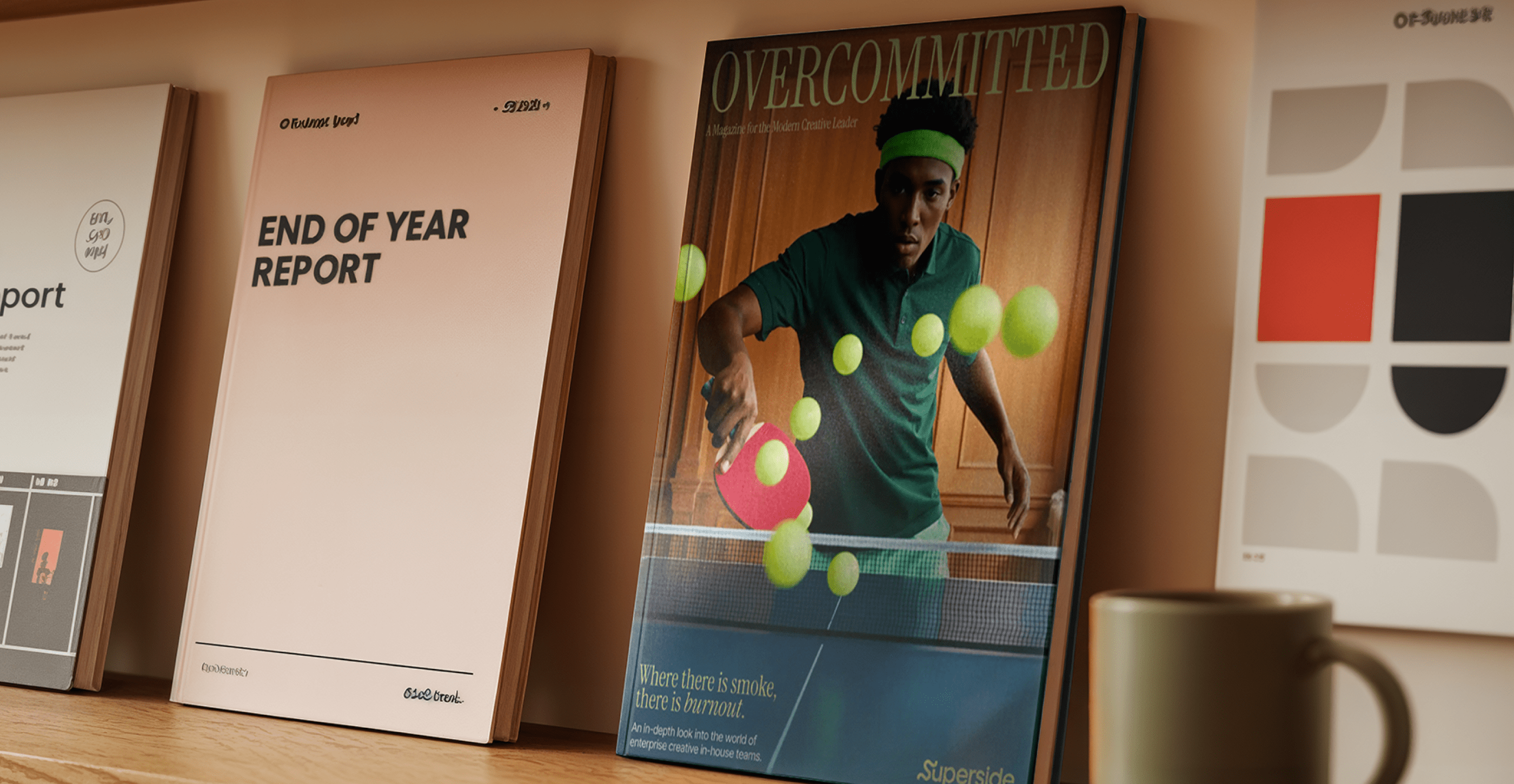
20 successful report design examples and ideas for 2025
Bland report design fades into the background, but standing out takes more than just good intentions. Enterprise creative teams are often maxed out as they juggle high-volume, high-speed demands, which makes it challenging to deliver stunning reports.Our recent “Overcommitted” report shows that a staggering 76% of creative teams experienced burnout over the past year. Working on complicated reports often adds to this burden.From annual reports packed with financials and forecasts to market research and stakeholder surveys, enterprises rely on a wide range of reports to inform decisions, engage investors and showcase results. These projects are business-critical and often complex in nature. Plus, they require accuracy and creativity.Let’s explore this year’s top 20 report design examples in this showcase designed to spark fresh thinking and inspire your next standout project.6 key design elements of effective enterprise reports